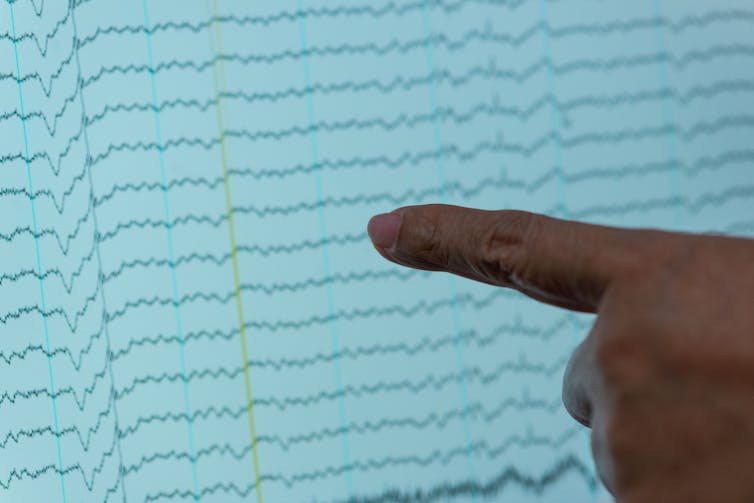Regardless of all the eye on applied sciences that scale back the hands-on function of people at work – similar to self-driving autos, robotic staff, synthetic intelligence and so forth – researchers within the area of neuroergonomics are utilizing expertise to enhance how people carry out of their roles at work.
Neuroergonomics is the research of human habits whereas finishing up real-world actions, together with within the office. It entails recording an individual’s mind exercise in numerous conditions or whereas finishing sure duties to optimize cognitive efficiency. For instance, neuroergonomics might monitor staff as they study new materials to find out once they have mastered it. It might additionally assist monitor fatigue in staff in roles that require optimum vigilance and decide once they must be relieved.
Till now, analysis in neuroergonomics might solely be performed in extremely managed medical laboratory environments utilizing invasive procedures. However engineering advances now make this work potential in real-world settings with noninvasive, wearable gadgets. The marketplace for this neurotechnology – outlined as any expertise that interfaces with the nervous system – is predicted to develop to US$21 billion by 2026 and is poised to form the day by day lifetime of staff for a lot of industries within the years forward.
However this advance doesn’t come with out threat.
In my work as a biomedical engineer and occupational drugs doctor, I research the right way to enhance the well being, well-being and productiveness of staff. Neurotechnology typically focuses on how staff might use wearable mind monitoring applied sciences to enhance mind perform and efficiency throughout duties. However neuroergonomics may be used to higher perceive the human expertise at work and adapt duties and procedures to the particular person, not the opposite approach round.
Capturing mind exercise
The 2 mostly used neuroergonomic wearable gadgets seize mind exercise in numerous methods. Electroencephalography, or EEG, measures adjustments in electrical exercise utilizing electrodes connected to the scalp. Purposeful near-infrared spectroscopy, or fNIRS, measures adjustments in metabolic exercise. It does this by passing infrared mild by way of the cranium to watch blood stream.
Each strategies can monitor mind exercise in actual time because it responds to totally different conditions, similar to a high-pressure work project or troublesome job. For instance, a research utilizing fNIRS to watch the mind exercise of individuals engaged in a 30-minute sustained consideration job noticed vital variations in response time between the start and the top of the duty. This may be crucial in security- and safety-related roles that require sustained consideration, similar to air site visitors controllers and cops.
Electroencephalography, or EEG, is one methodology of gathering mind exercise.
Jacob Schröter/image alliance through Getty Photographs
Neuroergonomics additionally research how mind stimulation could possibly be used to enhance mind exercise. These embody neuromodulation applied sciences like transcranial electrical stimulation, or tES; transcranial magnetic stimulation, or TMS; or targeted ultrasound stimulation, or FUS. For instance, research have proven that making use of tES whereas studying a cognitive coaching job can result in quick enhancements in efficiency that persist even on the next day. One other research discovered that tES may additionally assist enhance efficiency on duties that contain motor abilities, with potential purposes in surgical abilities coaching, navy duties and athletic efficiency.
Excessive-stakes moral questions
Using neurotechnology within the office has world implications and excessive stakes. Advocates say neurotechnology can encourage financial development and the betterment of society. These towards neurotechnology warning that it might gasoline inequity and undermine democracy, amongst different potential unknown penalties.
Ushering in a brand new period of individualized mind monitoring and enhancement poses many moral questions. Answering these questions requires all stakeholders – staff, occupational well being professionals, legal professionals, authorities officers, scientists, ethicists and others – to deal with them.

Tips on how to defend the mind exercise knowledge of staff stays unclear.
undefined undefined/iStock through Getty Photographs Plus
For instance, how ought to a person’s mind exercise knowledge be protected? There may be cause to suspect that mind exercise knowledge wouldn’t be coated by the Well being Insurance coverage Portability and Accountability Act, or HIPAA, as a result of it isn’t thought of medical or well being knowledge. Extra privateness rules could also be wanted.
Moreover, do employers have the correct to require staff to adjust to the usage of neuroergonomic gadgets? The Genetic Data Nondiscrimination Act of 2008 prevents discrimination towards staff based mostly on their genetic knowledge. Comparable laws might assist defend staff who refuse to permit the gathering of their mind data from being fired or denied insurance coverage.
Defending staff
The information neurotechnology collects could possibly be utilized in ways in which assist or harm the employee, and the potential for abuse is important.
Employers could possibly use neurotechnology to diagnose brain-related ailments that would result in medical remedy but in addition discrimination. They might additionally monitor how particular person staff reply to totally different conditions, gathering insights on their habits that would adversely have an effect on their employment or insurance coverage standing.
Simply as computer systems and the web have reworked life, neurotechnologies within the office might carry much more profound adjustments within the coming many years. These applied sciences might allow extra seamless integration between staff’ brains and their work environments, each enhancing productiveness whereas additionally elevating many neuroethical points.
Bringing all stakeholders into the dialog may also help guarantee everyone seems to be protected and create safer work environments geared toward fixing tomorrow’s challenges.